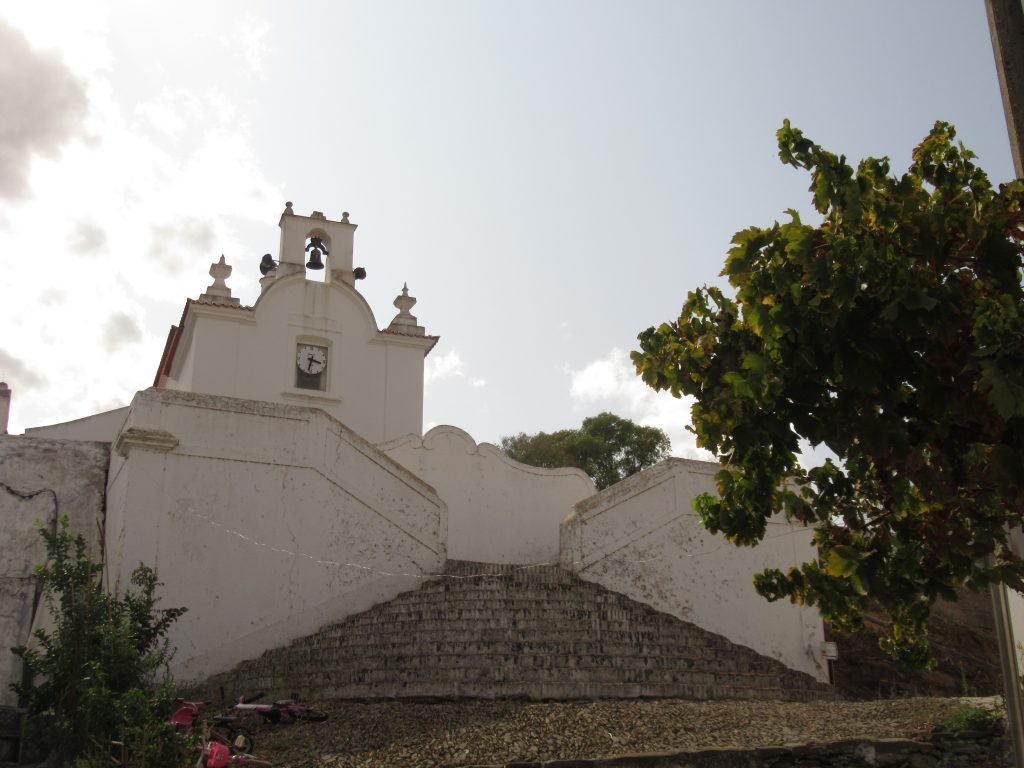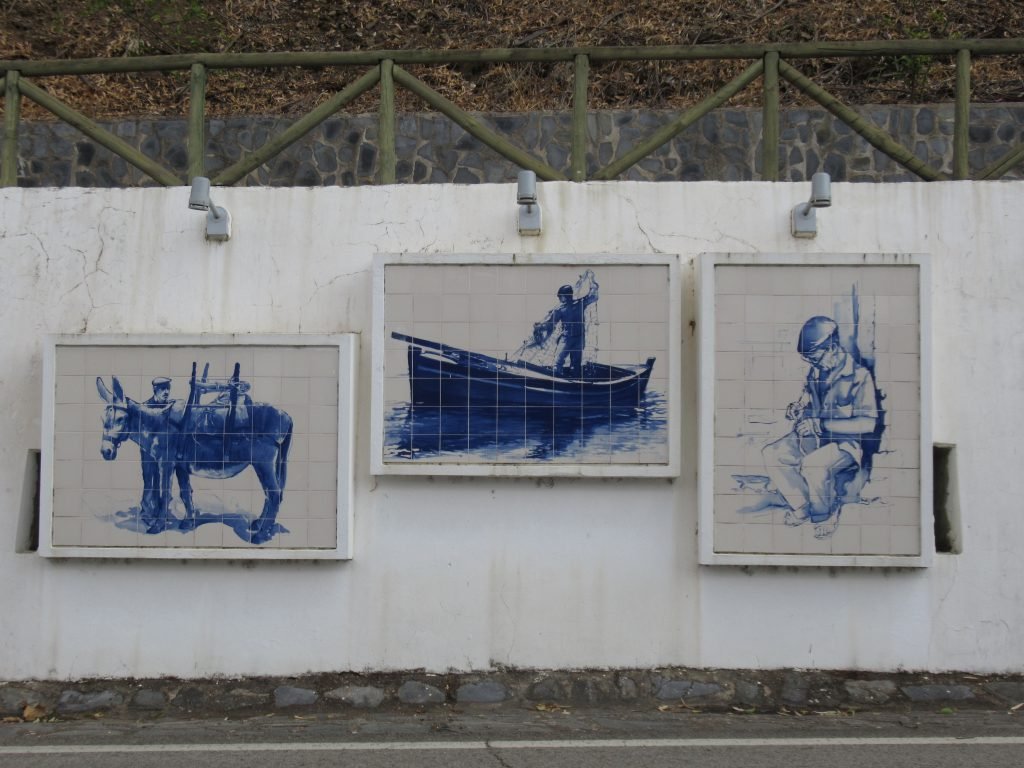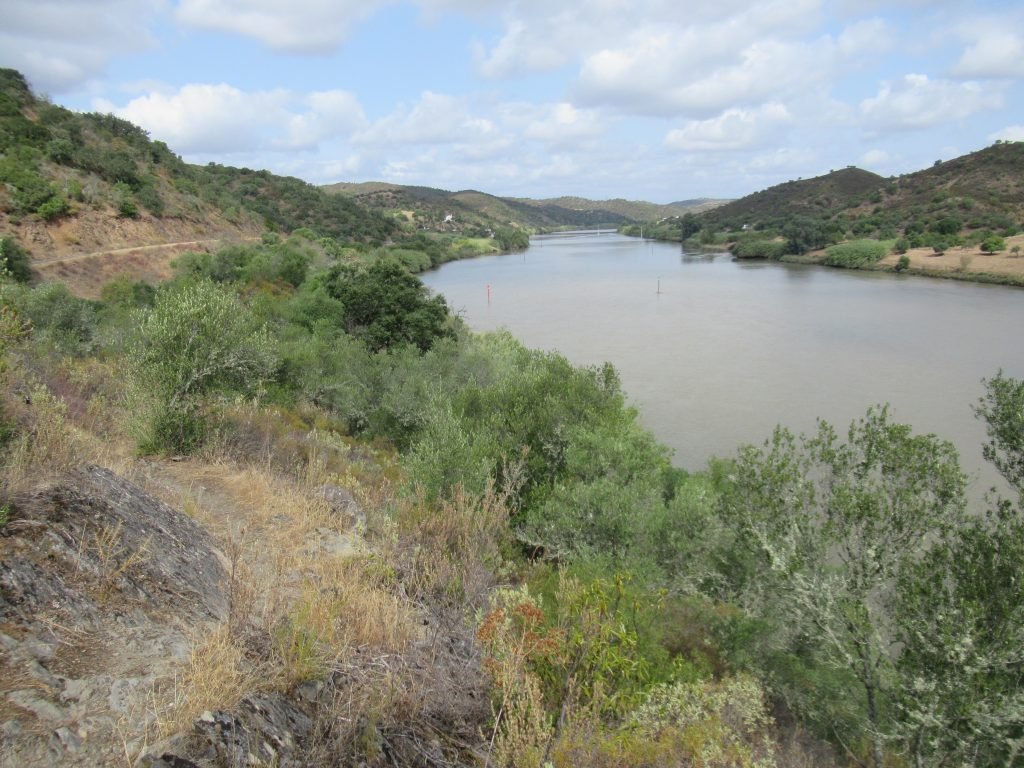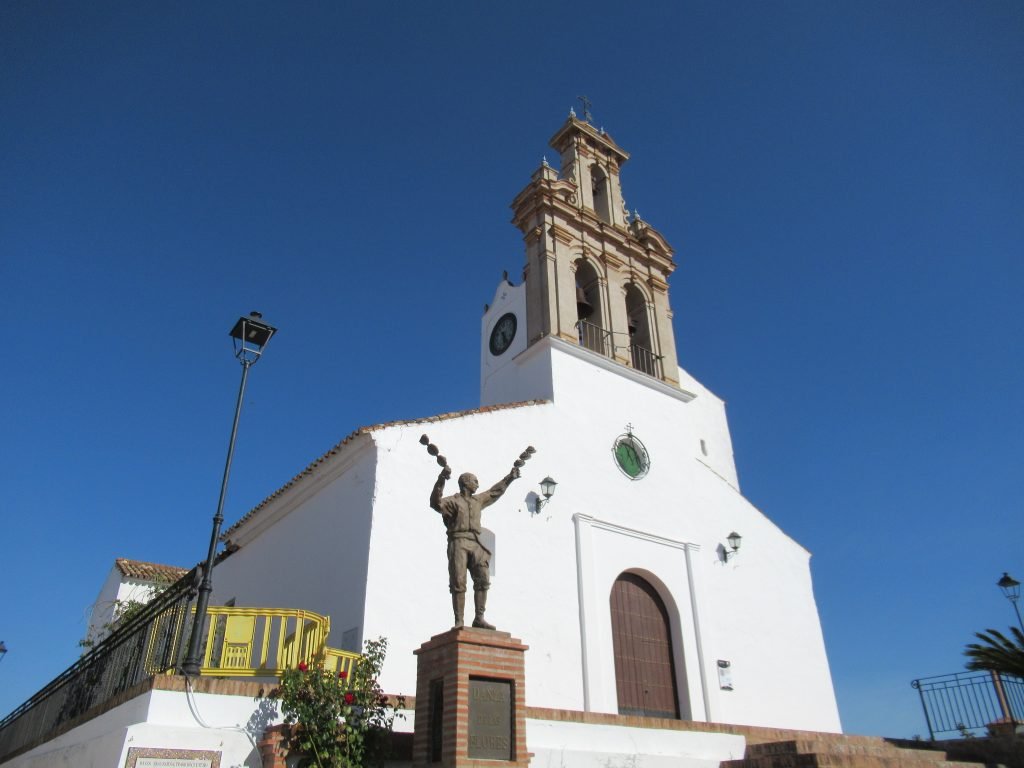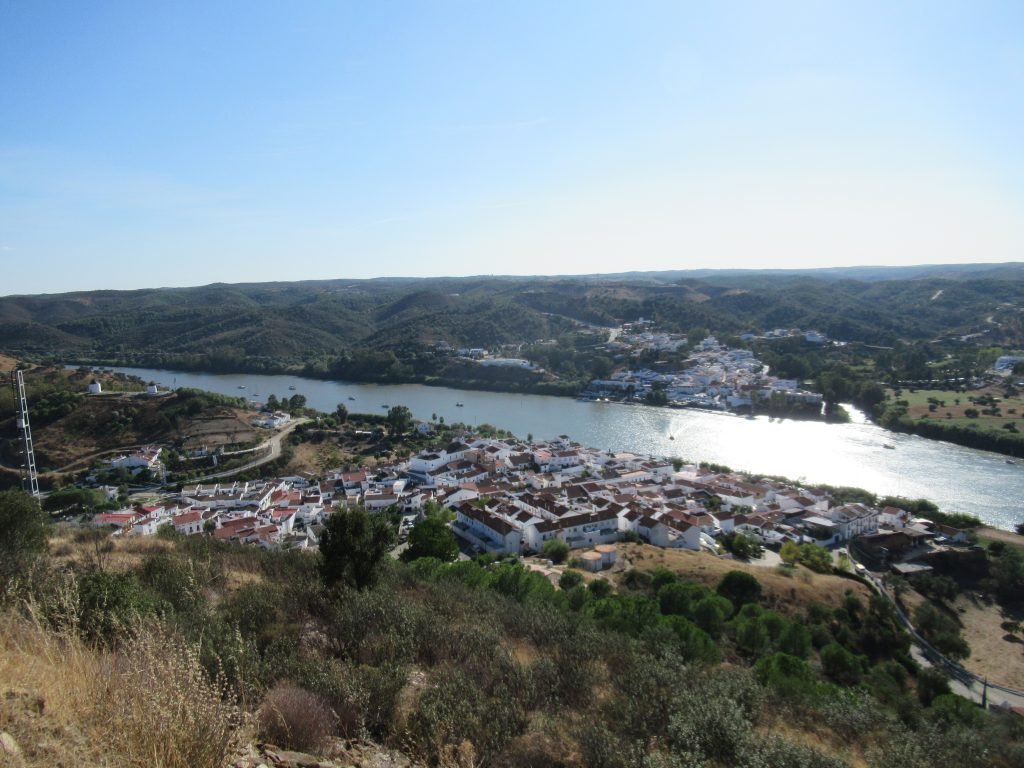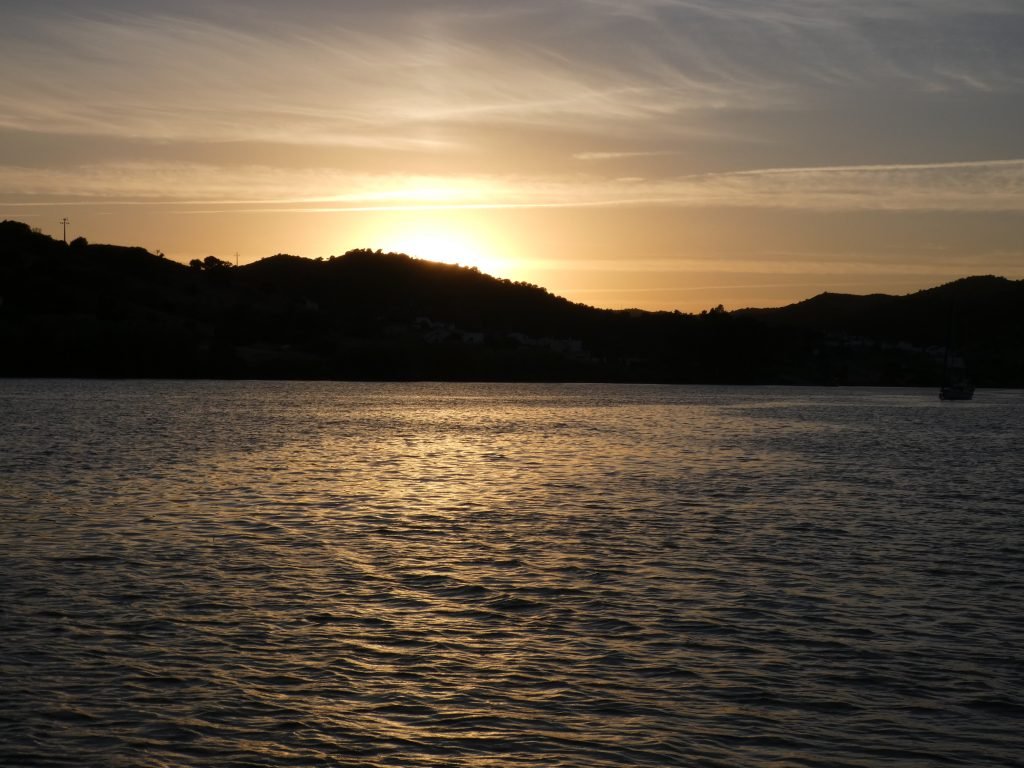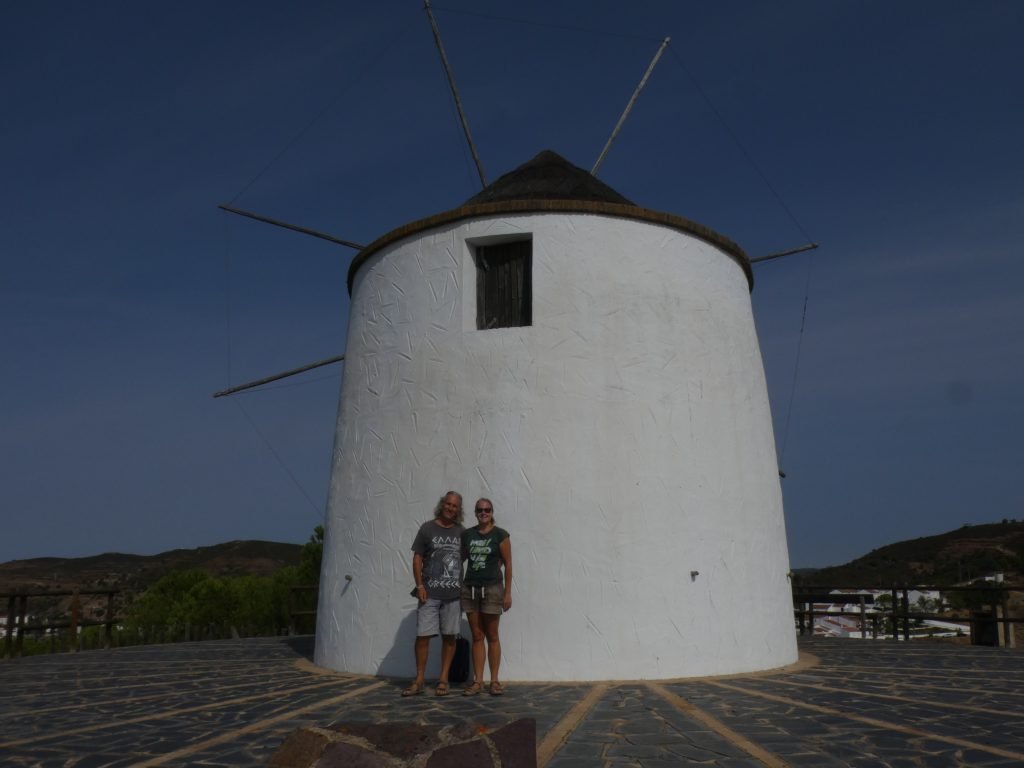We had a decision to make – should we stay in the Rio Guadiana for winter or head to the boatyard? Before Covid blighted our lives, there’d been a plan for 2020. After seven years of sailing around the Med, Emerald was in need of some TLC. We planned to lift out to a boatyard where we would paint the topsides, Coppercoat the hull and complete some mechanical jobs. It would tie in with my desire for some land time with summertime visits to family and friends. Eight months seemed like sufficient time for boat jobs and visits and if needs be, we could extend into the winter months.
We chose Portugal as our preferred location due to its mild climate, using our winter marina time in Cartagena to research prices and facilities in the Algarve and Lisbon.
A fellow cruiser recommended a yard in the Algarve for their good work with Coppercoat, but alas, our finances don’t stretch to others doing the work. We needed somewhere we could soda blast to remove the old antifoul, and where we could live aboard and complete our own work. Unfortunately, our preferred choice of Bruce’s yard in Faro doesn’t allow the soda blasting, so the next choice was to go to Lisbon.
Along Comes Covid
Then as we all know, along came a global pandemic to scupper everyone’s plans. Spain went into lockdown on the 15th March, one week before we’d expected to be leaving the marina. Shortly after, came the closing of borders between countries. We chose to be cautious and stayed in the marina, hoping the virus went away.
Well, it didn’t go away and one month stuck in the marina dragged into two. We modified our plan again, shifting the boatyard forward to the autumn. That would allow us a few months of fun in the Balearics before winter in the yard. We fervently hoped travel restrictions would lift enough for the family visits to happen too.
Freedom was my Best Birthday Present
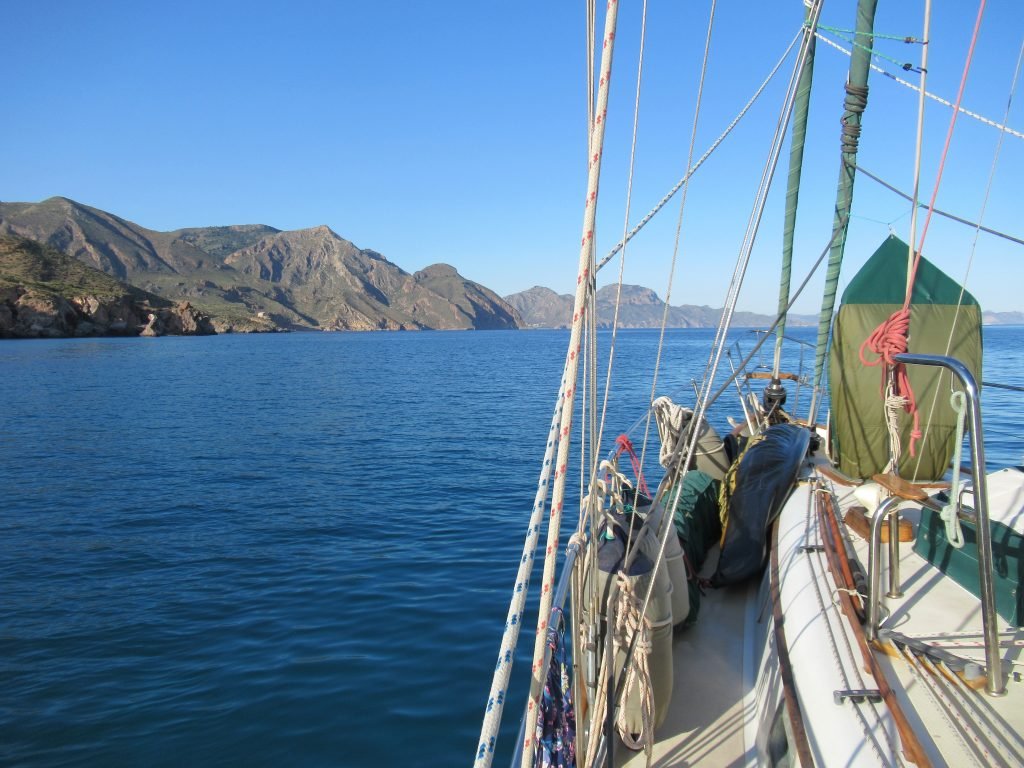
When May came along, it offered the potential of a long-awaited escape from the marina. The best present came a few days after my birthday, when Spain’s Covid rules relaxed slightly, allowing us to leave for an anchorage at Cabo Tinoso, a few miles west from Cartagena. The sun shone, winds were light and it was wonderful to be bobbing at anchor again.
Fast Forward to the End of Summer
After spending June and July in the Balearics, in August we began to make our way west, although weather regularly thwarted our progress. By early September we’d made it to Portugal and felt a lifting of time pressures. Although in reality, we still had over 200nm to sail to reach Lisbon, our brains conveniently overlooked that fact.
Now we were in the Rio Guadiana, along the stretch where it forms the border between Portugal and Spain. We’d anchored just south of the villages of Alcoutim on the Portuguese side, and Spanish Sanlucar de Guadiana. Fresh water is available for free, there are alongside pontoons on both sides for a small nightly fee and a shower/toilet block. A weekly fruit and veg market and meat van fulfilled our fresh food needs, with small supermarkets in both villages to top up with household goods and packaged items.
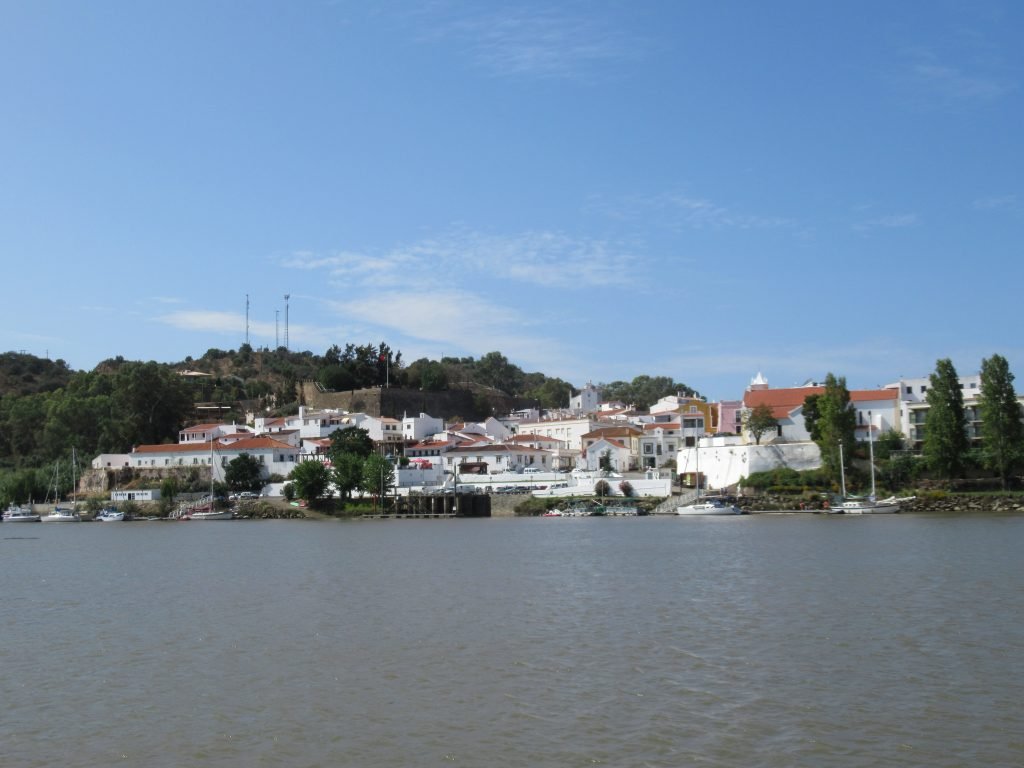

On the Portuguese side a library provides internet and printing services, the tourist office contains local history and information on things to do. There’s plenty of restaurants and bars and with a bottle of beer or a glass of wine costing only €1, we could afford a few nights out.
Propane and butane gas is available to buy on both sides, and there are a hardware store and a Chinese shop selling clothes and general items.
There’s even a sandy beach if we fancied a cooling dip! Pretty much all we needed was here.


Rio Guadiana River Life Fun
We allowed ourselves a week or two on the river before we’d need to get serious about moving on.
The summer had started sociably as we made our way through the Balearics with boats we’d over-wintered with. However, come July we had all scattered onto different paths, leaving a social void.
The Rio Guadiana easily filled this space. The village of Alcoutim had escaped fairly unscathed by Covid, with just a handful of cases and when we arrived, it was virus-free. Portugal still had some social distancing rules in place, including the requirement to wear masks when inside bars and restaurants. But with warm weather into the evenings, social occasions took place outside. We soon made new friends and within days of our arrival, there was a music session, with several people bringing guitars and entertaining us. Colin was in his element.

During the day, the weather was warm but not too hot, ideal for walking the trails we remembered. However, the land was parched and brown after a hot summer.
We were sad to find the pond where we’d seen terrapins in 2014 was now a dried-up patch of mud. But there were signs of nature fighting back.
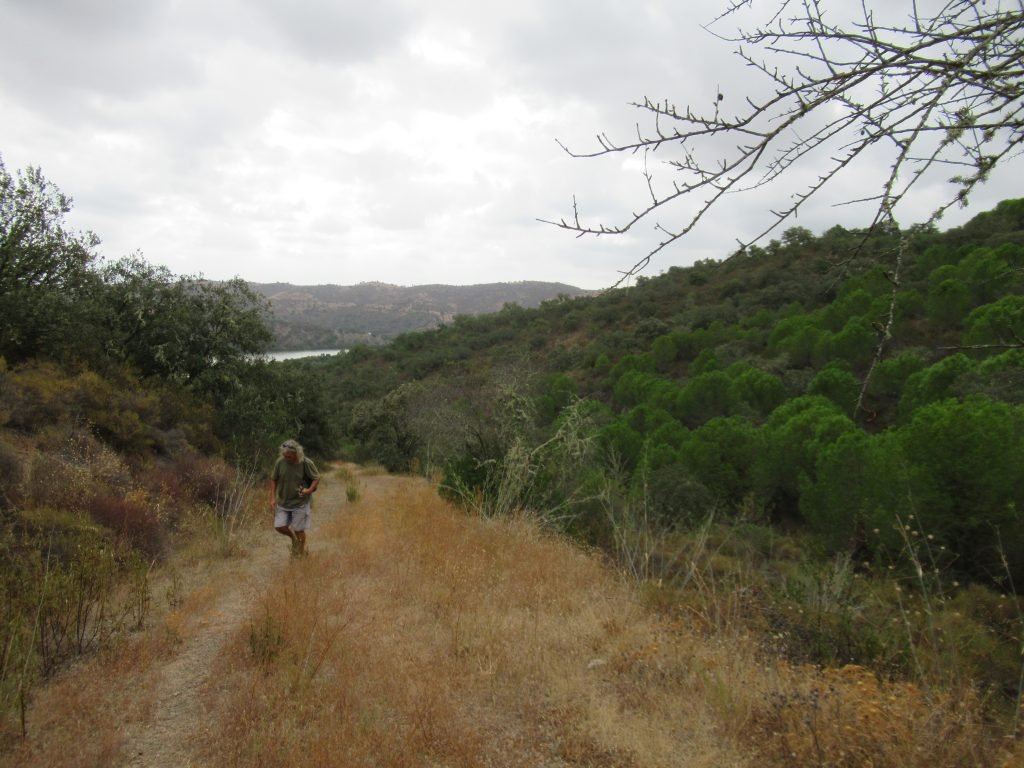

Tall spindly common asphodel reached their spindly arms up to the sky to display a starburst of pretty white flowers. And in a tiny puddle, we found frogs and brightly coloured dragonflies had made a home.





How About A Winter in the Rio Guadiana?
River life was all we’d hoped for.
Since our visit in 2014, Colin has harboured a desire to spend a winter in the river. There would be benefits, but I had some worries. Was it cold? What about the river fog that could hang around all day? What about floods?
Around us were many people who had spent several winters here afloat. I took the chance to ask them about their experiences. Most of my worries were eased and seeds began to take root.

Er, Hello, What About the Boat Jobs?
There was the elephant in the room. We still had to get to Lisbon and the boatyard. As time ticked on, we began to scour the weather forecast sites, looking for an elusive window of settled weather to open. The Atlantic can be an unfriendly sea with large swells bashing into the Portuguese coast. The prevailing winds at that time of year blow from the north. But remembering back to our passage down that coast in September 2013, we felt reasonably relaxed that an opportunity would appear. Back then southerly winds had trapped us in Lisbon, and blown for 10 days. It would be ideal if something similar returned in 2020.
However, the weather wasn’t being very accommodating. We experienced a few days of storms whilst in the river, which blew wild out at sea. Brief gaps in the northerly winds appeared, but they were so brief that by the time we’d have got to the start of our northern passage, the window would have closed. We reluctantly decided to leave the river, head west, and base ourselves at Portimao. There we would be only one day sail from the northerly leg of our passage.


A Reluctant Farewell to the Rio Guadiana
After one last excellent night out in Alcoutim we set Emerald’s bow south with the falling tide. We passed under the bridge near to low water and anchored on the seaward side. The next step was to get to Culatra before the next phase of westerly winds arrived.

Sailing Info
11th September: Larenjeiras to south of Alcoutim – 5nm
Anchored in mud, 4.5m, south of the villages in position 37 28.063’N 7 28.130’W
2nd October: Rio Guadiana to Ayamonte – 18nm
Anchored in mud, 6m at high water, in position 37 13.212’N 7 24.61’W
The Social Media Bit: Want to Follow Us?
If you’d like to follow us on other social media platforms (Facebook, Instagram and YouTube), you can do so by using these links:
Or use the link below to track our voyage on NoForeignLand.com.
And finally, you can sign up to receive email notifications of new blogs using the subscribe box at the bottom of this page.
Thank you from Nichola & Colin


